Samurai Revolution: The Dawn of Modern Japan Seen Through the Eyes of the Shogun’s Last Samurai
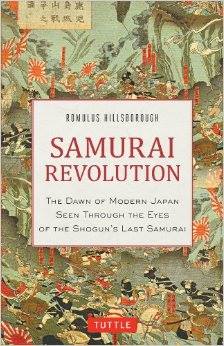
This is the story of the samurai revolution that spanned the third quarter of the nineteenth century. It transformed Japan from a country of hundreds of feudal domains under the hegemony of the Tokugawa Shogun, into a modern industrialized world power under the unifying rule of the Emperor. The shogun was head of the ruling Tokugawa family, and his regime was known as the Tokugawa Bakufu (Bakufu, for short).Samurai Revolution, at 608 pages, is the first English-language presentation and analyses of the powerful and alluring personalities of the revolution, in one volume aimed at a general international audience.Samurai Revolution “is one of only a small number of books in the English language that gives a true and authentic account of Japanese history.” Tsutomu Ohshima, Chief Instructor, Shotokan Karate of America
“We found it to be not only an excellent biography of Katsu, but an exceedingly well-done, intricate, and clearly written overview of this vital period of Japanese history.” Samurai Archives
“…Samurai Revolution serves as a compelling and timely warning for America today. Hillsborough astutely captures the serious consequences of self-imposed isolation, xenophobia and failure to adapt to the changing world.” Major Christopher J. Heatherly, Armchair General
“Hillsborough has produced a very readable account of this complex period, and his in-depth knowledge of Japan helps the reader understand the complexities of the issues involved and the difficulties faced by Japan’s leaders in a time of unexpected change.” historyofwar.org
Purchase Samurai Revolution from an independent bookstore in your community:
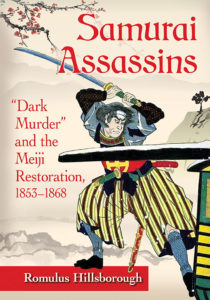
Samurai Assassins: “Dark Murder” and the Meiji Restoration, 1853-1868
The Japanese word for assassination is ansatsu, “dark murder,” and its significance in the samurai-led revolution which was the “dawn of modern Japan”–when the shogun’s military government was abolished and Imperial rule restored–forms the substance of Samurai Assassins.
“Hillsborough makes deft use of both contemporary Japanese historical scholarship and primary source materials in his presentation of compelling historical vignettes, commendably providing English-language readers with access to previously unavailable material . . . .” Recommended: All public and academic libraries. — Choice (A publication of the Association of College and Research Libraries)
Purchase Samurai Assassins from an independent bookstore in your community:

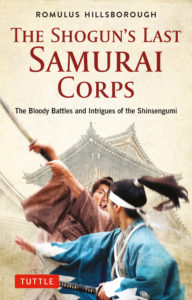
This book was originally published in 2005 under the title Shinsengumi: The Shōgun’s Last Samurai Corps. There is no change in the contents, other than the addition of the Introduction, the beginning of which follows:
The Shogun’s Last Samurai Corps: The Bloody Battles and Intrigues of the Shinsengumi (Tuttle 2021) is the true story of the notorious samurai corps formed in 1863 to arrest or kill the enemies of the Tokugawa Shogun. The only book in English about the Shinsengumi, it focuses on the corps’ two charismatic leaders, Kondo Isami and Hijikata Toshizo, both impeccable swordsmen. It is a history-in-brief of the final years of the shogun’s government, which collapsed in 1867 with the restoration of Imperial rule. In writing Shinsengumi, Hillsborough referred mostly to Japanese-language primary sources, including letters, memoirs, journals, interviews, and eyewitness accounts, as well as definitive biographies and histories of the era.
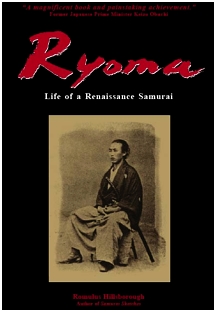
Ryoma: Life of a Renaissance Samurai
(The classic biographical novel of Sakamoto Ryoma, the only one in the English language.)
A magnificent book and painstaking achievement. — Former Japanese Prime Minister Keizo Obuchi
The founder of Japan’s first modern corporation was a swaggering swordsman who packed a Smith and Wesson, an outlaw who led a band of samurai to overthrow the shogun, and one of the most colorful figures in Japanese history. His name was Ryoma, which is the title of the only biographical novel of this truly Renaissance man in English.
Mid-19th-century Japan was a caldron of political upheaval and intrigue, bloody inner-fighting among samurai, and the end of three centuries of rule under the shogun. This most enthralling age in the annals of Japan brought forth some of the most fascinating men in that nation’s history. Those men modernized Japan, and laid the foundation for the militarism of WWII and the economic powerhouse of today. This close look into the hearts and minds of those two-sworded men provides a deep insight into the political, cultural, and psychological roots of modern Japan.
“An epic study of a man who made modern Japan.” – The Daily Yomiuri
Samurai Sketches: From the Bloody Final Years of the Shogun
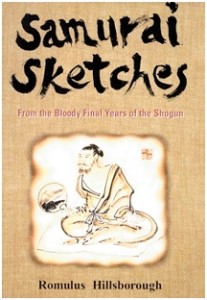
Samurai Sketches: From the Bloody Final Years of the Shogun (Ridgeback Press 2001; hardcover, $24.95)
“A quiet work of mute precision that brings to life the Hagakure and those who lived by its dictates.”—Kirkus Reviews
The final years of the samurai were an age of unprecedented turmoil and bloodletting in Japan. They heralded the end of nearly three centuries of rule under the Tokugawa Shogun. The rule of law was deteriorating, assassination and murder were rampant, and inner-fighting among the warrior class embroiled the nation. After the United States forced an end of over two hundred years of Japanese isolation, two contrasting philosophies were embraced by the samurai. On one side were those who would overthrow the shogun and restore the Emperor to power. Opposing the revolutionaries were the allies of the Tokugawa Bakufu, headed by the shogun.
While the shogun’s men clashed violently with the revolutionaries, as samurai they shared with each other an allegiance to an unwritten code of honor which governed the ways they lived and died. Theirs was a stoic system of morals which condoned suicide, vengeance and, in some cases, cold-blooded murder. Samurai Sketches is, to quote author Romulus Hillsborough, “accurate portrayals of the heart and soul of the samurai, the social and political systems of whom have, like the Japanese sword, become relics of a distant age, but the likes of whose nobility shall never again be seen in this world.” In recounting what he terms “the great epic which was the dawn of modern Japan,” Hillsborough delves deeply into the psyche of the men of the samurai class. Brought to life are not merely warriors of a distant age and culture, but human beings, both good and bad, who suffer the same pangs of body and mind as all of us.
Samurai Tales: Courage, Fidelity, and Revenge In the Final Years of the Shogun
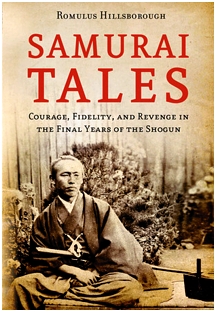
Samurai Tales (Tuttle 2010) is an updated edition of Samurai Sketches.
Or purchase Samurai Tales from an independent bookstore in your community:

